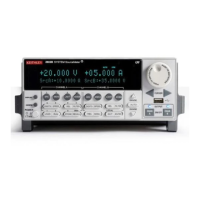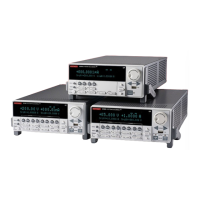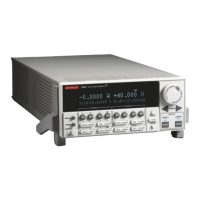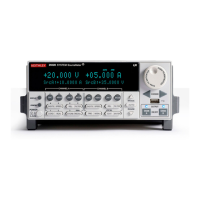2600AS-901-01 Rev. B / September 2008 Return to Section Topics 10-23
Series 2600A System SourceMeter® Instruments Reference Manual Section 10: Triggering
NOTE The input queue can fill up with trigger entries if too many *TRG
messages are received while a test script is running. This can be
averted by using the
localnode.prompts4882 attribute (see
Section 19 for more information) and by using trigger.wait()
calls that remove the *TRG messages from the input queue. If the
input queue fills with too many trigger entries, messages like abort
will not be processed.
Manual triggering
The TRIG key is the stimulus input for manual triggering. Each time the TRIG key is pressed, a
trigger event is generated. You can monitor for a manual trigger event using the event ID
display.trigger_EVENT_ID. See
Using the TRIG key to trigger a sweep for an example of
how to use a manual trigger.
There are no action overruns for manual triggering.
Interactive triggering
The complexity of certain test system configurations may not permit a static trigger setup, but
instead requires more dynamic control of triggering. In such cases, the interactive triggering
programming method allows the generation and detection of trigger events that can be controlled
on demand under remote control. For example, interactive triggering can be used when you need
to make multiple source function changes or implement conditional branching to other test setups
based on recent measurements.
Detecting trigger events using the wait() function
All of the Series 2600A trigger objects (except the SMUs) have built-in event detectors that monitor
for trigger events. The event detector only monitors events generated by that object and cannot be
configured to monitor events generated by any other trigger object. Using the wait() function of
the trigger object causes the Series 2600A instrument to suspend the script until a trigger event
occurs or until the specified timeout period elapses.
For example, use trigger.blender[N].wait(Y) to suspend script operation until an event
blender generates an event, where N is the specific event blender and Y is the timeout period.
After executing the wait function, the event detector of the trigger object is cleared.
Example:
-- Wait up to 10 seconds for a front panel TRIG key press.
display.trigger.wait(10)
-- Wait up to 60 seconds for timer 1 to complete its delay.
trigger.timer[1].wait(60)
-- Wait up to 30 seconds for input trigger to digital I/O line 10.
digio.trigger[10].wait(30)
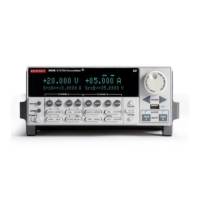
